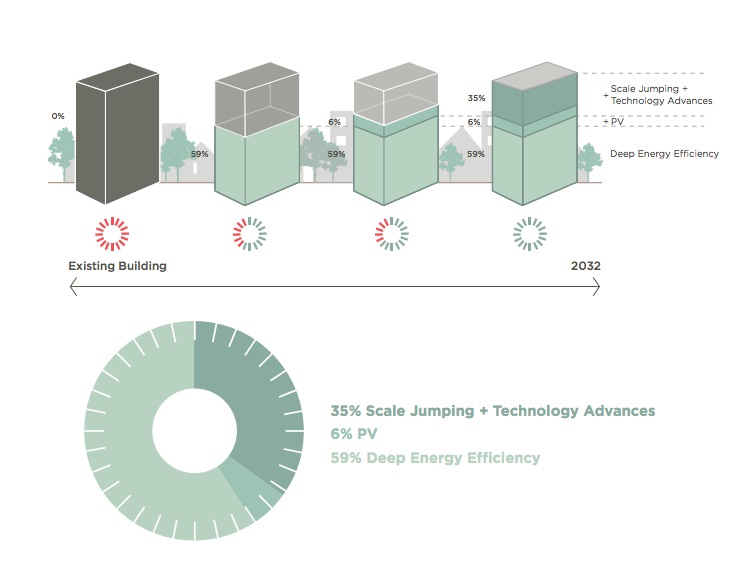The District of Columbia has more green buildings than other large U.S. cities on a per capita basis, according to the 2012 Green Building Report. D.C.’s policies have made it a leader in highly efficient building construction and renovation.
New goals will likely prompt the District to raise the efficiency bar even higher. To help guide policies for a new era of green design, D.C.’s Department of the Environment commissioned a study to assess costs and benefits associated with net zero energy, net zero water, and Living Buildings.
The Net Zero and Living Building Challenge Financial Study: A Cost Comparison Report for Buildings in the District of Columbia was conducted by International Living Future Institute, New Buildings Institute, and Skanska. The team’s analysis identified incremental cost premiums for deep energy and water conservation as well as for photovoltaic and water reuse systems that would bring a project to net zero.
The cost premium for energy efficiency was 1%-12% depending on building type, and rose to 5%-19% for net zero energy. “If the owner has sufficient tax appetite, tax credits and renewable energy credits make the return on investment approximately 30%, whereas the return on investment for energy efficiency alone was in the range of 5-12%,” the report says.
Read the full report at: http://newbuildings.org/net-zero-living-building-challenge-financial-study
Related Stories
Codes and Standards | Dec 4, 2017
Trump tax proposal would kill historic tax credits
Developers would lose up to 20% discounts on some redevelopment projects.
Codes and Standards | Nov 30, 2017
Asheville, N.C. rezoning favors pedestrians, could change city’s character
Focus is on layout and look of new buildings rather than use.
Codes and Standards | Nov 29, 2017
Many New York City landlords have not addressed new flood codes
City revised building codes after Superstorm Sandy, but many owners not required to upgrade.
Codes and Standards | Nov 28, 2017
Nail-Laminated timber Canadian design and construction guide released
Includes practical strategies and guidance with lessons from real-life projects.
Codes and Standards | Nov 27, 2017
New standard to monitor building sealing performance
Increased understanding of how materials act when stretched and compressed is the goal.
Codes and Standards | Nov 27, 2017
Denver voters approve green roof mandate
Buildings of 25,000 sf or larger required to install vegetative roof or PVs.
Codes and Standards | Nov 21, 2017
USGBC adopts ‘RELi’ resilient building and design standard
The standard prescribes methods for designing more resilient buildings and communities.
Codes and Standards | Nov 21, 2017
Updated material transparency web site and hazardous building materials list unveiled
Improved versions of tools aimed at use of healthier construction supplies.
Codes and Standards | Nov 16, 2017
White roofing isn’t always the best choice
Adverse effects include heat reflection onto nearby walls.
Codes and Standards | Nov 15, 2017
U.S. finalizes tariffs on Canadian softwood lumber
The duties would add 20% or more to cost if trade negotiators can’t find common ground.
















